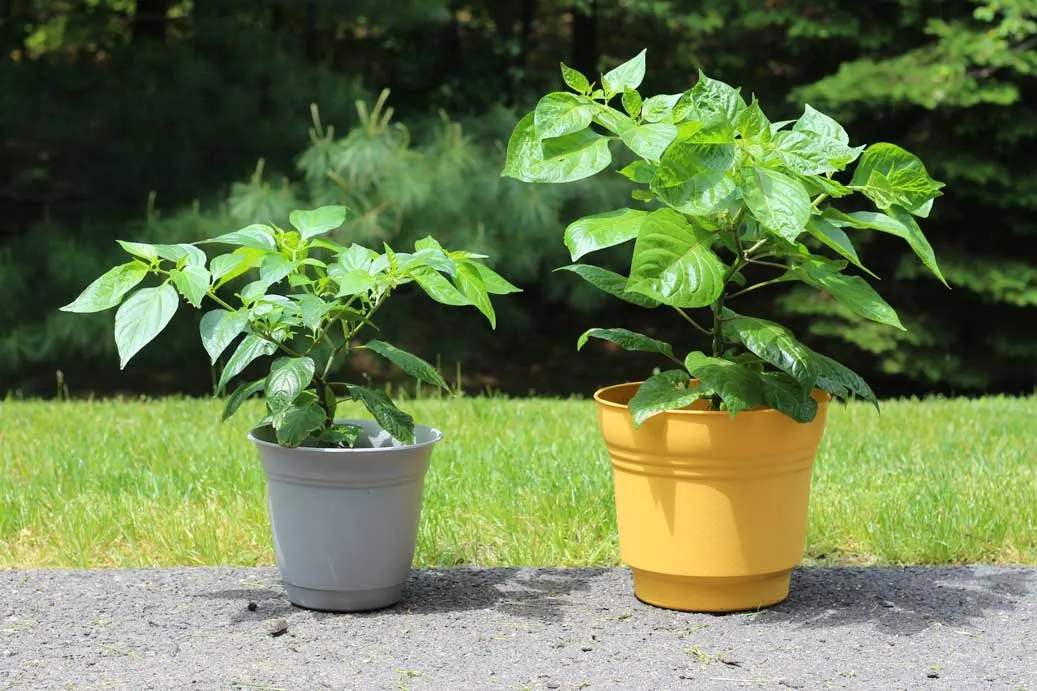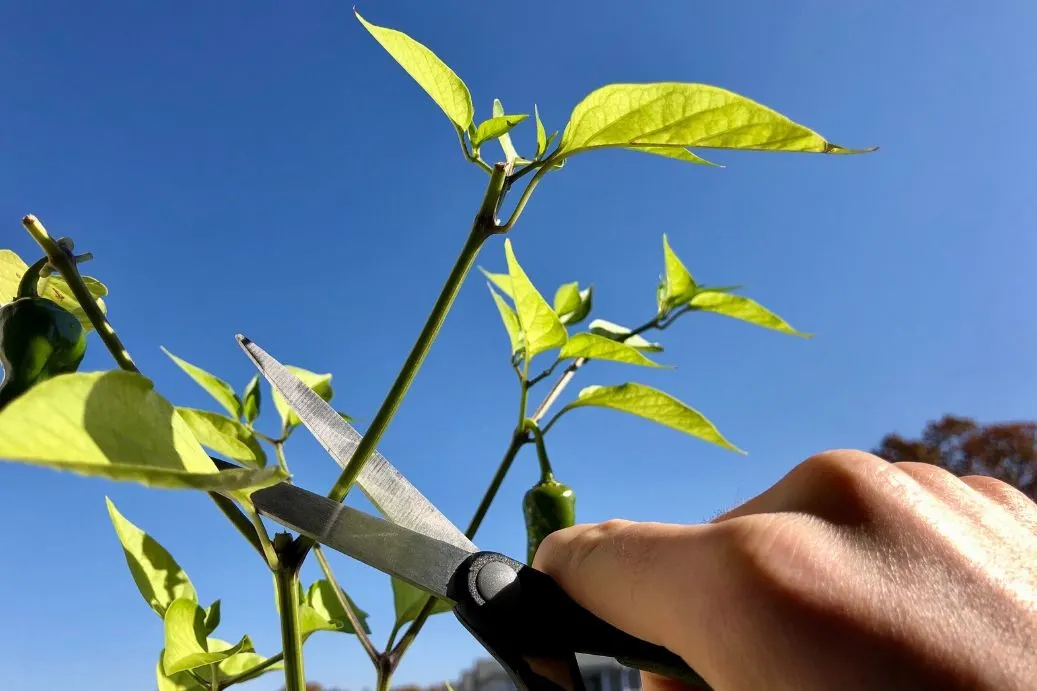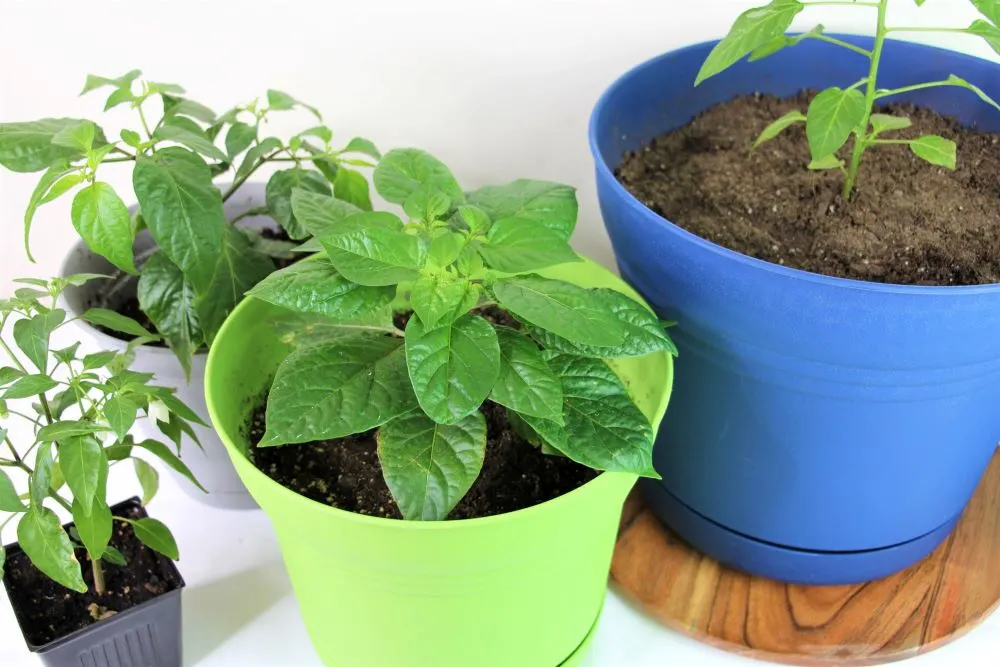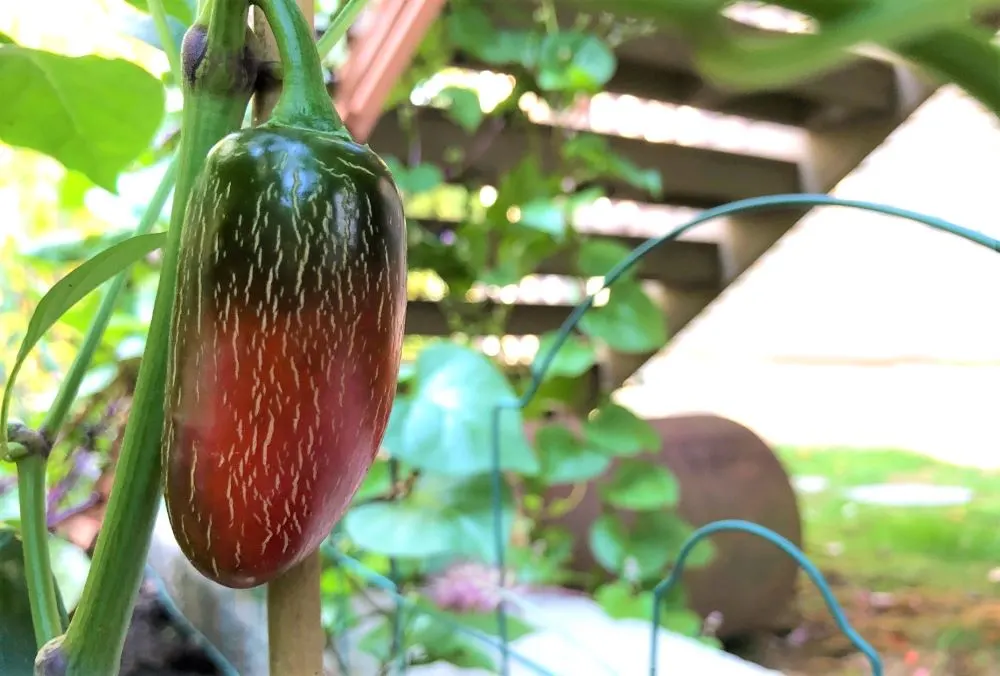So you’re growing peppers and you need to speed up the process. Maybe you are behind on planting this year, or you just want to increase your pepper plant’s yield this season. Peppers grow pretty fast when cared for properly, especially after they are a month or so old.
However, there are a few techniques you can try to make your peppers grow more quickly. In this article, you will learn how to make peppers grow faster.

Use A Grow Light
Most regions of the world require you to start your peppers indoors. Unless you live close to the equator, the winter months are too cold with too little sunlight to grow peppers year round.
Thankfully, starting plants indoors is easy and gives the peppers enough time to mature outside. However, if you start your seeds inside, you should always use a grow light.
Grow lights are becoming more affordable and much less cumbersome. Older lights were large and loud, with cooling fans running non-stop. Now, a smaller, quiet LED grow light can help your plants grow fast and strong from seed.
Read our detailed article about the best grow lights for peppers here.
Be sure to position your grow light an appropriate distance above your peppers. We use a shelving unit to mount our grow light above our pepper seed trays. The distance from the light to the plants varies from one light to another, so be sure to read the instructions.
Not only will your peppers grow faster, but they will be stronger and leafier. Without providing strong light from day one, your pepper plants will become tall and leggy. They will also likely have smaller harvests and may require staking.
Fertilize Regularly
Light is important, but nutrients are equally vital. Without proper nutrition, your pepper plants will grow slowly and may develop issues. These include yellowing leaves, improper root development, curling leaves and yes, stunted growth.
With so many options on the market, choosing a fertilizer can be overwhelming. However, we always recommend using fertilizer with a healthy amount of nitrogen during younger plant growth.
Each of these three fertilizers is designed for the different stages of plant development. The first stage helps the plants grow plenty of healthy leaves. The second helps encourage lots of flowers, and the third accelerates fruit production.
If you prefer organic gardening, try Miracle-Gro organics (water-soluble) or Jobe’s Organic Veggie Fertilizer (slow release).
If you want to learn more about fertilizer for pepper plants, read our article here.
Transplant At The Right Time
Transplanting peppers is important to give the plants room to continue growing. If you wait too long, your plants may become root bound.
If you start your seeds indoors in small seed cells (1 inch x 1 inch), then they will need to be transplanted into larger pots 3-4 weeks after sprouting. The root systems should just be reaching the bottom of your container when you transplant.
Transplanting at the right time ensures that the root system is never constrained by the size of your pot. We start our pepper plants in seed cell trays, move them to 3.5″ pots, and then to their final containers (either into the ground or in large pots).
Learn more about transplanting peppers here.
Consider Pruning Early On
Pruning pepper plants early in the season (about 1.5-2 month old plants) can encourage your plants to become bushier. We rarely use this method anymore, but if you have a longer growing season it can possibly be beneficial to overall yield.

While it may not be the right time for you, pruning, or topping off your peppers can help your plants grow sturdier. The plants will recover quickly from the process and will grow new shoots and often more flowers in the long run.
Don’t just go hacking away your plants! Make sure the timing is right, and read our article about pruning pepper plants here first.
Use A Large Enough Container

When pepper plants are constrained to a small pot, the plant’s size will be smaller as well. This is because the root system runs out of space to expand, and the plant foliage follows suit.
Most pepper varieties require a minimum of 3-5 gallons of soil to grow optimally. This varies from one type to another, but it is best to be on the safe side and go bigger.
As a rule of thumb, the larger the pepper variety, the larger the pot should be. For example, bell peppers should be planted in a larger pot than thai chilies.
Learn more about choosing the right container size for your pepper plants here.
Plant In Full Sun
Once your pepper plants are ready for the outdoors, make sure you choose a location with the most sunlight possible. If your garden space is shaded, do your best to avoid unnecessary shade throughout the day. Peppers will grow faster during sunny days.
If you are growing any taller plants along with your peppers, make sure that the peppers are on the South side (if you are in the Northern hemisphere). If you are growing in containers, be sure you place the pots away from any tall structures (like your house, lawn furniture, bushes, etc.).
Try using a sun tracking app to determine the ideal location for your pepper plants. Sun Seeker is one option we found in the App store.
Pick Peppers When They Ripen
In order to allow your plants to produce at their best, you should harvest peppers when they are ripe. This will allow the plant to continue driving energy to producing more peppers. The remaining peppers will grow faster if you are diligently picking ripe peppers.
This is optional, as some peppers will continue to ripen to new colors if left on the plant. For example, jalapeno peppers are usually picked when green, but will ripen further to black and finally a deep red. The peppers typically become sweeter and hotter the longer they remain on the plant, so consider this before harvesting.

I hope this article helped you learn how to make peppers grow faster! There is only so much you can do to speed up growth for your pepper plants, but these tips should help. Let us know how your peppers are looking after making these adjustments in the comments below.



Don
Wednesday 13th of September 2023
My wife and I have had pathetic results growing and harvesting peppers we just planted some plants hydroponically (using the Keatky method) and will see if we can do better and am looking forward to planting your way, using your suggestions.
Jim
Friday 26th of May 2023
Looking for a banana pepper tha has a little heat, less than a poblano but more Thant 5he sweet variety , any suggestions? Thanks Peppergeek!
peppergeek
Tuesday 30th of May 2023
That's tough, the hot banana peppers usually have jalapeño level heat, so not sure I can help!
George Rybak
Wednesday 29th of June 2022
I’ve been using a weed mat and it seems my Peppers have a hard time growing . Is this a problem others are having. They grew better without the matt but pulling weeds with my back was the reason I use
Sean
Monday 6th of June 2022
Black panther , ghost and other seedlings are ready for their final pot(5gallon buckets ) . Is it best to plant only one per bucket or can I plant 2 . Which will give me the best yield.
peppergeek
Tuesday 14th of June 2022
They are pretty big plants when full grown, so we'd definitely recommend 1 plant per 5 gallon bucket.
Maria
Sunday 15th of May 2022
My pot a peno pepper seedlings are starting to flower, what should I do
peppergeek
Monday 16th of May 2022
Are they in their final pot? If so, you can let them flower and fruit. If the plants are still pretty small (under 1 foot tall) I would pick off any early fruits that begin to form so the plant focuses on leafy growth before fruiting.